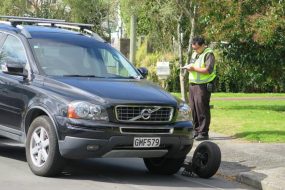
The safety of our children is important, especially when it comes to their transportation to and from school. They are to be protected against reckless drivers.
However, because of how fragile school children’s minds are, school buses are equipped with various safety features, including flashing lights, to ensure their protection as they board and disembark. The flashlights work as a reminder to drivers to either pass the bus or not. Therefore, can you pass a school bus with no flashing lights?
Yes, you can pass a school bus with no flashing lights provided it’s safe to do so. As long as the school bus stop sign is not extended and the flashing lights are not on, you can comfortably pass the bus.
Can You Pass a School Bus with No Flashing Lights?
Yes, “you can pass a school bus with no flashing lights as long as it is safe to do so.”
Laws regarding the passing of school buses vary from one state to another, making it important for drivers to be aware of the school bus regulations in the area.
In many jurisdictions, it is generally illegal to pass a school bus when its red lights are flashing and the stop sign is extended. These signals indicate that children are either getting on or off the bus and passing the bus at this time poses a significant risk to their safety.
However, when the school bus is not displaying flashing lights and the stop sign is not extended, You are permitted to pass the bus, provided it is safe to do so and there are no other relevant traffic signals or signs indicating otherwise.
For example, if you are driving and caught up with a school bus, you don’t have to keep following the school bus at the back when it’s just moving with no signs for you to stop. You can just pass the bus provided it is safe to do so.
The essence of the flashing light is to notify you that school children are being picked up or dropped off and these children can be crossing the road and there could be danger, so stop. But, when the flashing light and stop sign are not out, you can pass the bus and continue your journey.
Nevertheless, even if the law permits passing a school bus without flashing lights, you should prioritize safety above all else. School buses are designed to transport children in a secure environment, but accidents can happen if drivers are not vigilant.
Passing a stationary school bus without flashing lights may seem harmless, but it is important to consider the unpredictability of children.
As reiterated earlier, children may not always adhere to safety protocols or may unexpectedly enter the roadway. Therefore, even when the bus is not actively loading or unloading passengers, drivers should exercise caution and be prepared to stop if necessary.
A moment of inattention can lead to tragic consequences, and the responsibility falls on every driver to prioritize the safety of these children.
Why Do School Buses Have Flashing Lights?
School buses are equipped with flashing lights for safety purposes, specifically to alert other motorists and pedestrians to exercise caution when students are boarding or disembarking from the bus.
The flashing lights serve as a visual signal to indicate different phases of the student transportation process, enhancing the safety of children as they travel to and from school.
Here are the primary reasons why school buses have flashing lights:
1. To Signal to Other Road Users to Stop
Before coming to a complete stop, school buses typically activate yellow flashing lights to warn drivers that they are about to stop. This provides an early alert to nearby motorists, giving them time to slow down and prepare to stop safely.
When a school bus is stopped to pick up or drop off students, it activates its red flashing lights. These lights, along with the extended stop sign on the side of the bus, signal to other drivers that they must stop. This allows students to safely cross the road and board or exit the bus without the risk of oncoming traffic.
2. To Prevent Accidents
The combination of red and yellow flashing lights, along with the stop sign, creates a highly visible and distinctive signal. This helps prevent accidents by alerting drivers to the presence of children and the need to exercise caution in the vicinity of a school bus.
3. Legal Compliance
The use of flashing lights on school buses is often mandated by traffic laws. Laws in various jurisdictions dictate that other drivers must stop when they see a school bus with activated red flashing lights and an extended stop sign. Failure to comply with these laws can result in penalties.
4. Child Safety
The primary objective of school bus flashing lights is to prioritize the safety of children. By providing clear and standardized signals to other road users, school buses reduce the risk of accidents and ensure a safer environment for students as they travel to and from school.
Is Illegal to Pass a Stopped School Bus with Red Lights Flashing on School Property on Any Undivided Highway or Area in Maine?
Passing a stopped school bus with its red lights flashing is illegal in many jurisdictions, including Maine, as it poses a risk to the safety of children boarding or disembarking from the bus.
In Maine, as in many other places, the regulations regarding passing a stopped school bus are outlined in the state’s traffic laws, and it states that passing a school bus with its red lights flashing is prohibited on any undivided highway or area. Violating these laws can result in serious consequences, including fines, license points, and other penalties.
You can consult the latest version of the Maine Motor Vehicle Laws or contact the Maine Department of Transportation or local law enforcement agencies for more information regarding passing school buses.
Conclusion
You can pass a school bus with no flashing lights and no stop sign provided it is safe to do so, especially when the bus is not actively engaged in loading or unloading students, drivers should exercise caution, prioritize safety, and recognize their ethical responsibility to protect the lives of school children.









